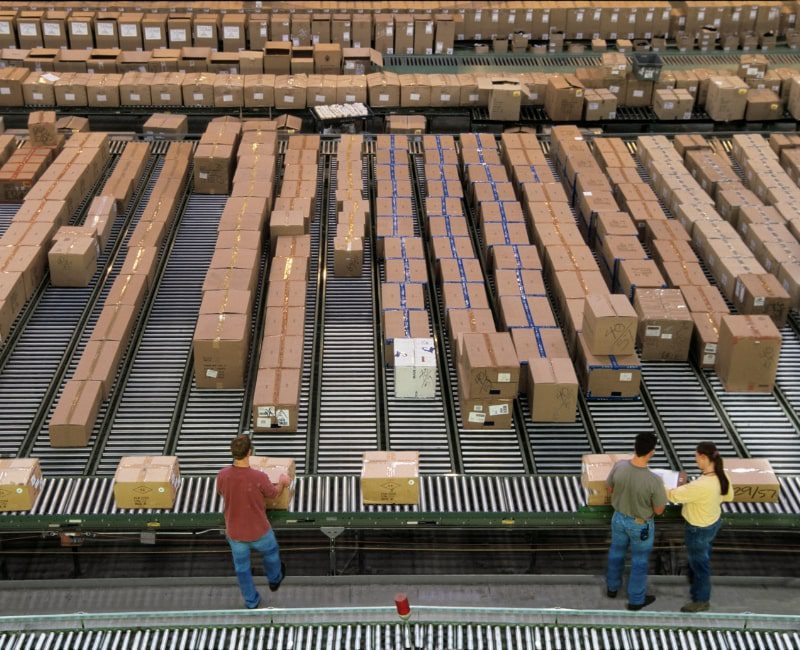The demand for unique, personalized experiences has fueled the rise of personalized products, from curated subscription boxes to bespoke gift sets. But with this trend comes a logistical challenge: how can businesses efficiently assemble and deliver these unique orders? The answer lies in expert kitting.
Kitting, the process of pre-assembling individual items into ready-to-ship packages, is a powerful solution for streamlining the fulfillment of personalized products. Kitting not only saves time and reduces costly errors, but also unlocks greater customization and flexibility. This allows businesses to craft memorable experiences that foster stronger brand loyalty and encourage repeat purchases. In this guide, we’ll dive into the complexities of kitting for personalized products, and explore the best practices and strategies to help your business thrive.
What is Kitting?
While it might sound like a simple concept, kitting offers a surprising number of benefits and can be applied in various ways to enhance your operations.

Kitting and Its Benefits
Kitting is the process of gathering multiple individual items and packaging them together into a single unit, or “kit,” ready for sale or distribution. Think of it as creating a curated collection of products that complement each other or fulfill a specific need. This pre-assembly process offers several significant advantages:
Increased Efficiency: By pre-packaging kits, you eliminate the need to pick and pack individual items for each order, significantly speeding up your fulfillment process.
Improved Order Accuracy: With all the components of a kit pre-determined and packaged together, the risk of missing items or incorrect shipments is reduced.
Streamlined Inventory Management: Kitting simplifies inventory tracking by consolidating multiple SKUs into a single kit SKU. This makes it easier to monitor stock levels and forecast demand.
Types of Kitting
Kitting can be applied to a wide range of products and industries. Here are a few common examples:
Promotional Kits: These kits often contain a collection of branded merchandise or product samples used for marketing campaigns, events, or giveaways.
Subscription Boxes: A popular trend, subscription boxes deliver a curated selection of products to customers on a recurring basis, often centered around a specific theme or interest.
Product Bundles: By combining complementary products into a single package, businesses can offer customers added value and convenience, often at a discounted price.
Step-by-Step Guide to Kitting for Personalized Products
Kitting offers a powerful solution for efficiently managing and fulfilling orders for personalized products. But how can you effectively implement kitting strategies to create unique and satisfying customer experiences? Let’s break down the process into four key steps:

1. Understanding Your Customer Needs
Before you begin assembling kits, you must have a great understanding of your target audience. This involves going beyond basic demographics and looking into their preferences, needs, and motivations.
Gather Customer Data: Analyze your sales data, website traffic, and customer interactions to identify patterns and trends. What products are frequently purchased together? Are there any specific demographics or segments that exhibit unique preferences?
Identify Trends: Stay informed about the latest trends and innovations in your industry and within the category of personalized products. What are your competitors offering? What are customers saying on social media and online reviews?
Utilize Customer Feedback: Actively solicit feedback from your customers through surveys, polls, and feedback forms. Ask them directly what kind of personalized products or kits they would be interested in.
2. Designing the Perfect Kit
With a solid understanding of your customer needs, you can start designing kits that resonate with your target audience.
Selecting Products: Choose products that complement each other and create a cohesive experience for the customer. Consider the overall theme or purpose of the kit and how each item contributes to it.
Create Variations: Offer different kit variations to cater to various customer segments or preferences. This could include offering different sizes, color options, or product combinations.
Consider Packaging: The packaging of your kit is important for a positive first impression. Choose packaging that is both visually appealing and functional, ensuring the products are well-protected during shipping.
Incorporate Personalized Elements: Add a personal touch to your kits by including handwritten notes, custom inserts, or personalized messages. This can go a long way in making your customers feel valued and appreciated.
3. Optimizing Your Kitting Process
Efficiency is key to successful kitting operations. Streamlining your processes will help you save time, reduce costs, and improve accuracy.
Warehouse Layout: Design your warehouse layout to facilitate smooth and efficient kitting operations. Ensure that all items are easily accessible and that the workflow is streamlined.
Utilize Technology: Implement inventory management software to track stock levels, monitor kit components, and manage orders effectively. This will help prevent stockouts and ensure timely fulfillment.
Quality Control Training: Provide comprehensive training to your staff on kitting procedures, quality control standards, and best practices. This will help ensure consistency and accuracy in your kitting operations.
Leverage Automation: Explore automation options for repetitive tasks such as labeling, packaging, and sealing kits. This can help improve efficiency and reduce labor costs.
4. Ensuring Quality Control
Maintaining high-quality standards is essential for customer satisfaction and brand reputation.
Inspection Processes: Implement quality control checks at every stage of the kitting process, from receiving inventory to final packaging. This will help identify and address any issues early on.
Packaging Materials: Choose packaging materials that are appropriate for the products being kitted and that will protect them from damage during shipping.
Returns & Replacements: Establish a clear and efficient process for handling returns and replacements. This will help minimize customer frustration and ensure a positive experience even in the event of an issue.
Continuous Improvement: Regularly review your kitting processes and gather feedback from your staff and customers to identify areas for improvement. This will help you optimize your operations and ensure continued success.
Advanced Strategies for Kitting Personalized Products
Mastering the fundamentals of kitting is a great start, but to truly excel in fulfilling personalized products, consider implementing these advanced strategies. These techniques will help you optimize your operations, enhance personalization, and scale your business effectively.

Demand Forecasting and Inventory Management
Accurate demand forecasting and efficient inventory management are crucial for successful kitting, especially when dealing with personalized products with varying components.
Analyze Historical Data: Utilize past sales data, seasonality trends, and marketing campaign information to predict future demand for different kit variations. This will help you ensure you have the right components in stock to meet customer needs without overstocking.
Implement Just-in-Time Strategies: Minimize inventory holding costs and reduce waste by implementing just-in-time inventory strategies. This involves ordering kit components only when they are needed for assembly, based on demand forecasts and order patterns.
Utilize Management Software: Implement robust inventory management software to track stock levels, monitor component availability, and automate reordering processes. Real-time visibility into your inventory will help you prevent stockouts and ensure the timely fulfillment of personalized kits.
Leveraging Technology for Personalization
Technology plays a vital role in enhancing personalization and streamlining kitting operations.
Integrate Platforms: Integrate your kitting operations with your CRM and marketing automation platforms to gather valuable customer data and insights. This data can be used to personalize kits, tailor marketing messages, and create targeted promotions.
Use Data Analytics: Leverage data analytics to analyze customer preferences, purchase history, and browsing behavior to personalize kit contents. This could involve recommending complementary products, offering customized product variations, or including personalized messages.
Implement AI: Consider implementing AI-powered recommendation engines to suggest relevant products and kit variations to customers based on their individual preferences and needs. This can enhance the customer experience and increase average order value.
Scaling Your Kitting Operations
As your business grows and the demand for personalized kits increases, it’s essential to have scalable processes in place.
Develop Flexible Processes: Design your kitting operations with flexibility in mind. This could involve implementing modular workstations, utilizing flexible automation solutions, and creating adaptable workflows that can be easily adjusted to accommodate increased order volumes.
Partner with a 3PL: Consider partnering with a third-party logistics provider (3PL) to gain access to expertise, resources, and technology that can help you scale your kitting operations efficiently. A 3PL can handle various aspects of your fulfillment process, from kitting and assembly to warehousing and shipping, allowing you to focus on your core business activities.
Elevate Customer Experiences with Kitting & Assembly
As we’ve outlined in this guide, kitting plays a crucial role in efficiently managing and fulfilling personalized orders. By implementing the strategies outlined, businesses can streamline their operations, reduce costs, and enhance customer satisfaction.
From understanding your customers’ needs and designing the perfect kit to optimizing your processes and leveraging technology, each step contributes to successful kitting operations. Remember to regularly analyze your processes, gather feedback, and adapt your strategies to stay ahead.
By embracing kitting as a core component of your fulfillment strategy, you can unlock new levels of efficiency, personalization, and customer satisfaction, ultimately driving growth and success for your business. At Hanzo, our kitting and assembly solutions are tailor-designed to streamline your operations and drive growth for your business. Ready to elevate your logistics? Contact us today!



